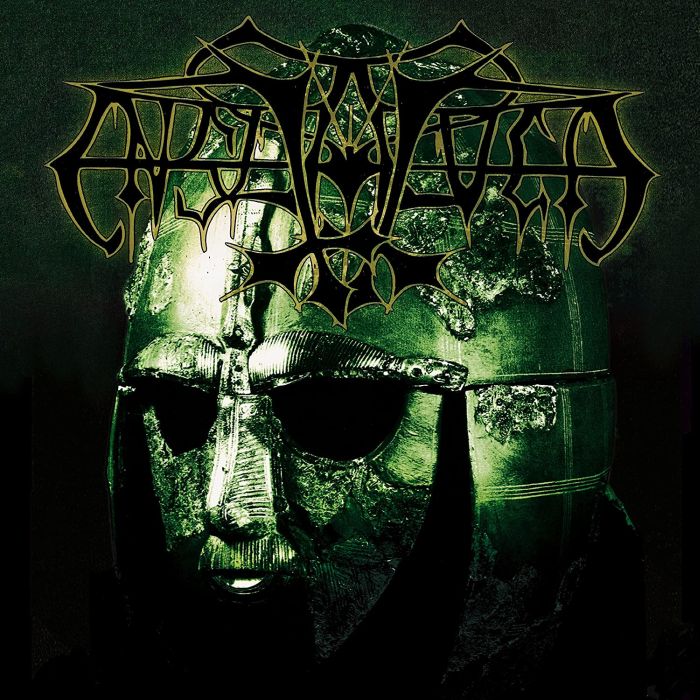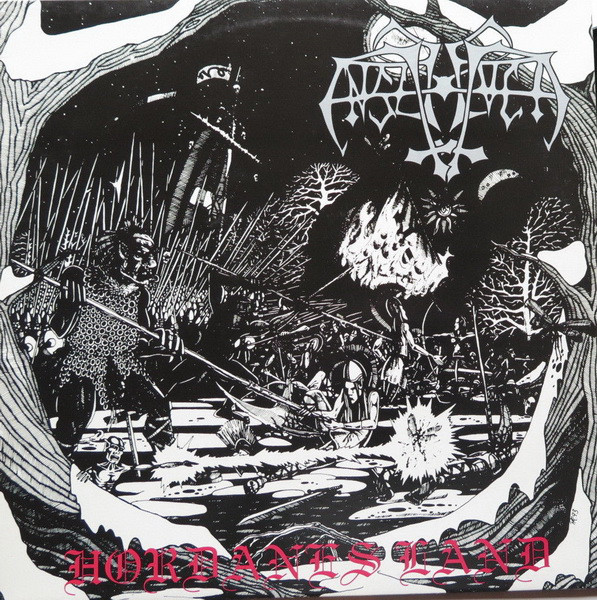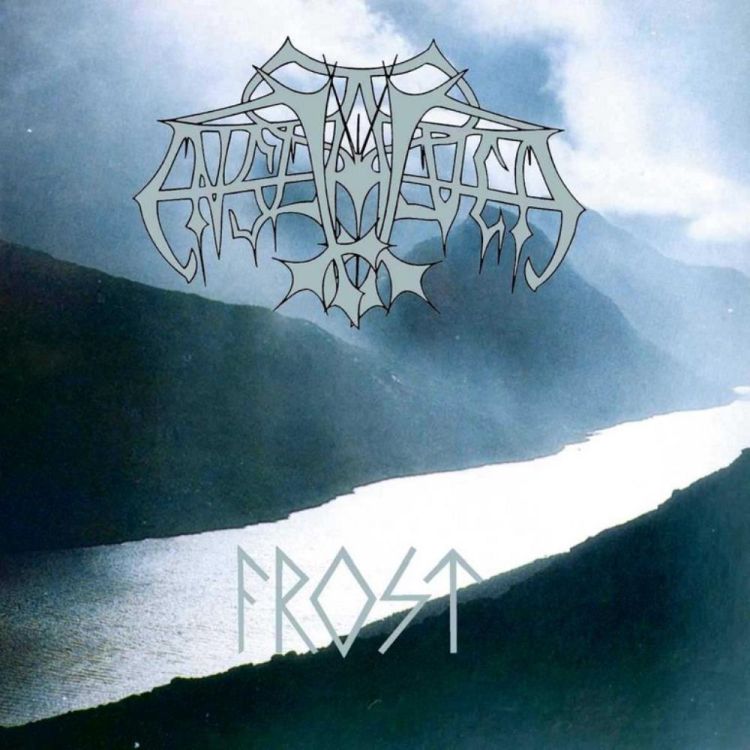Enslaved
Vikingligr Veldi (1994)

Vikingligr Veldi represents the twilight season that is Autumn.
The season of change; of the joys of Summer, of the plentiful harvest, the songs and dances of the festival season and the slow cooling of the hot winds. Those are now things of the past, the dreaded grasp of Winter now awaits. Our thoughts go between our memories of the bright seasons going, and to how we are to fend with ourselves now that the frost will be soon appearing, shredding us of our warmth, as the trees are stripped of their life. Like a warrior preparing for war, we steel our hearts, and again, forced by the viscious cycle of time, go into the great beyond to face the season of Death.
And so is this album. A time of reflection of past joys, the sorrow and despair ahead, and the marvellous rebirth of something so ancient a ritual into a new context.
It finds a particular beauty in the confines of this season, it explores the wide range of possible moods, and rises above them all. Beyond any concept of good and evil, or of Life and Death. But more an omniscient force, unknown and unseen... like that which changes the seasons.
It would not be unfair to deem Vikingligr Veldi a symphonic endeavour. Each song has an over-riding motif, or driving melody that takes its shape, it's epicentre of focus. The developments within can be slow in pace to take form, they are always reflective. But they are also always enriched with an air of vibrancy or lost majesty. Here patience is an aim, not a means to an end. We are embraced by a blissful ambience. Lost in long melodic cycles. An autumn reverie, a dream within ourselves. Only to often be awoken by the battering of drums, the oncoming storms in the night. A violent and chaotic outburst as a new, more aggressively played section appears. The clutching of our soul to a more concrete reality.
Enslaved excel at recycling and composting melodic ideas within songs, rebirthing them in subtlely unique ways, in different moods, structures and time frames. Slowly adding new elements as needed, or stripping them when necessary. Texture, and contrast abound. There is no rush, or excesses. Hence, the comparison to Autumn, at one moment the idea will bear the glory of Summer, but in its next context it will die its Death to Winter. The cycle of the seasons, and the transcendence of the mere moment in time. A merging of the past and the future.
This is one of those albums that allows the mind to take a perspective, then have it made necessary for such perspective to quickly change. It allows for growth, but its youthful ambition and gravity may perhaps confine itself from much of the general populous.
This is certainly an album of coming and going, of the relationship between time and our thoughts, an expression of the melancholy felt in a life of unending change.
Hordanes Land (1993)

Trademark Enslaved. Hordanes Land celebrates the legacy of the ancient Norse, supplanting our modern culture of pity and greed, lust and melodrama with the ancient battle-lore of our ancestors. Arcane mysticism erupts within the frenetic buzzing of battle fury, songs gently develop with subtle interchange of mood, melody and tension.

Frost (1994)

The bar is set much higher for bands who already have top-tier releases to their name, and the comparisons to these great works are inevitable. That applies to Enslaved who previously engraved their name permanently into the top-echelon of the Black Metal genre with Hordanes Lane and Vikingligr Veldi.
Whilst Frost retains a lot of the aesthetic formula that worked so well previously. For instance there are still the long-winding progressive Black Metal riffs that have a touch of majesty (either from the ornamentation of keyboards or cleaner acoustic guitars). But structurally this is very different, at a glance it is far less minimalist and reliant on subtle variations and lengthy melodic cycles and far more full of movement and change. Some of the riffing is shorter, more aggressive and much sharper in sound. At these times, the riffs drop their progressive leanings and develop into pure Norse Black Metal, almost a twisted cross between Immortal’s Pure Holocaust and structured in the same swirling way of Darkthrone’s Cromlech. In these songs or lengthy sections, the drums have a full bodied sound, symbols crashing against the clatter of the snare and double kick pedals, a stormy blizzard sound like the aforementioned Immortal album (but less wall-of-sound). Whilst it is more straight down the line from an aesthetic perspective in these parts, Enslaved still masterfully cycle through riffs, insert or modify riffs, invoking tension/conflict from interesting angles, often using these fast, aggressive sections to build to a crescendo in which their progressive tendencies take over.
Speaking of these progressive tendencies, at least in terms of sound, they are more obvious here than on previous releases. Perhaps as a sign of the Viking Metal to come, Enslaved make liberal use of cleanly sung passages, in that baritone warrior voice that has become wide-spread in Metal since. There are also plenty of lightly distorted sections, slower clean arpeggios and keyboard segues. Some of the longer songs on the album are loaded with such transitions, which admittedly, make it feel a bit messy or sprawling in parts. It is definitely a very abrupt departure from the old Enslaved formula. But generally they hold it together and it is tastefully done and fits the general theme of Viking mythology.
Most of the songs follow the theme set by the song-title. For instance Loke, which is probably the most straight forward Black Metal song on here, sounds cunning and devious, those two opening riffs circle each other, then evaporate into even more riffs or variations of themselves, in a way that has a sly playfulness, but also laden with a kind of biting aggression at the same time. Fenris is a song about the wolf Fenrir who in Norse mythology was bound by the Gods to prevent him from causing havoc. The song opens with a black metal riff signifying looming terror, and quickly moves into a cleanly sung viking section (the return of the Vikings to unleash Fenrir on the modern Christian world). A galloping minor chord Black Metal riff arrives and is the major riff of the song and represents the unchained wolf, free at last. A similar riff develops, with those trademark Enslaved cleaner chords played over the top of surging Black Metal. A cold, frosty Black Metal riff then takes over as the wolf runs rampant and darkness returns. The song's major galloping riff returns and is cycled against the colder riff to build tension, then eventually the major riff is played in all its ascendant glory with majestic keyboards for the crescendo. Afterwards fast, fervent versions of the previous riffs clash as chaos reigns supreme and Ragnarok approaches.
And so on are the songs on the album themed. This is a mature album from an established and successful Black Metal band, and whilst not their best work, is certainly a worthy listen.
And so on are the songs on the album themed. This is a mature album from an established and successful Black Metal band, and whilst not their best work, is certainly a worthy listen.

Comments
Post a Comment